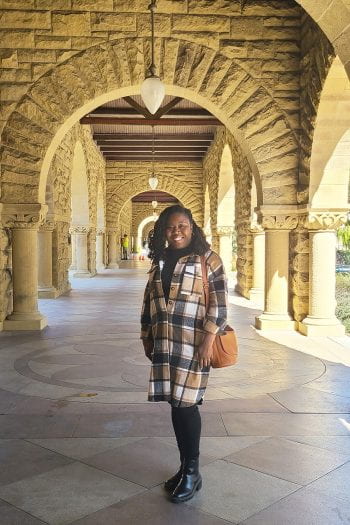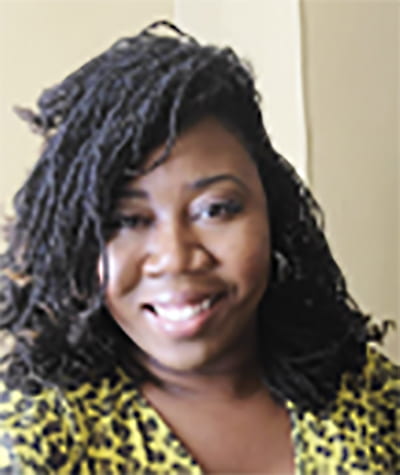
Lifting As We Climb:
Navigating Math Identity As An Educator
“Oooh, oooh, I know!” Brittany’s hand shot up into the air as she wiggled her body from side to side in her chair, being careful not to tip over her desk. The teacher gave her a quick smile and surveyed the room. Only a few other students had their hands raised.
She knew the problem that she had just posed was challenging, but she anticipated that more students would want to share their thinking with the class. It was early in the school year, and the teacher had noticed an emerging pattern: many of her fourth graders deferred to Brittany when given the opportunity to answer some of the more challenging problems. Several seemed to lack confidence in sharing their ideas in math, and most went along with whatever Brittany* came up with, never questioning or challenging her mathematical thinking or ideas. New to teaching this grade level, the teacher was caught off guard by the negative dispositions towards math that some of her students brought with them to the classroom. Reflecting on her own experiences with math as a student, she knew she had her work cut out for her and was determined to help her students develop healthier relationships with the subject.
I was the new fourth grade teacher in this story. Prior to this, I taught Pre-K through second grade. During that time, I developed a passion for helping students see math as a friend, and not the enemy. To do this, I had to first explore my own experiences as a math learner. During my early years as a teacher, I was not at ease teaching math, due to my own negative experiences as an elementary and college student. In addition, I didn’t see myself as fitting the archetype of a “math person” or “mathematician.” In my mind, I wasn’t a white man or Asian, so my mathematical thinking wasn’t valued. Also, I don’t recall ever being encouraged as a girl to succeed in math. It was something at which boys were expected to excel, and that was that. Consequently, when I started teaching, I did not have a positive math identity. I also unconsciously held deeply embedded stereotypes about who could be considered mathematically capable. Years of self-reflection and “unlearning” journeys later, I was able to recognize these same beliefs in some of my students. To foster a positive math identity through a classroom culture of discourse, authenticity, and respect, I knew that I would need to encourage my students to challenge the mental models they had in their minds. I wanted all of my students to know that they were capable and mathematically brilliant.
In addition, children as young as three are aware of and may unknowingly embrace stereotypes that perpetuate false beliefs about math abilities.
What I did not mention in my early teaching story is that Brittany, my eager math student, was Asian, and the rest were Black and Hispanic/Latino/a. Recent research has shown that there often exist two narratives about math performance. The first contends that African Americans are not good at math, while the second suggests that Asians are somehow inherently good at it. Both narratives are the primary reason that math achievement and ability get linked to race both in schools and society. These stereotypes have an impact on math identity and racial identity construction, and there is evidence that these are co-constructed. In addition, children as young as three are aware of and may unknowingly embrace stereotypes that perpetuate false beliefs about math abilities.
I explored this topic further for my dissertation, which examined the lived experiences that may have contributed to positive math identity and math achievement in high-achieving middle school students of color. My study focused on how teacher practices and the unique nature of mathematics support positive math identity in students . During the year described in my story, I sought to do this by helping students connect their out-of-school experiences with the math we were learning in class as much as possible. Admittedly, this was improved upon over the next few years as I became more comfortable teaching students in upper elementary. Part of the challenge was unlearning tricks and deepening my content knowledge with upper elementary mathematics, especially fractions. Fractions sometimes act as a gatekeeper in elementary mathematics, so making students as comfortable as possible with them was an integral part of my own relearning.

Today, as a math instructional specialist, I am fully committed to supporting teachers in practicing what I preach about equitable, high-quality math instruction. Students, especially those at the elementary level, should not feel the pressure to perform or conform to a culture built on high-stakes testing and low-demand, drill-based instruction. Cognitively demanding tasks and learning experiences that allow multiple perspectives and ways of thinking and being in mathematics, are opportunities to support the development of positive math identities with our youngest of students.
Math classrooms must have a culture of safety, supportiveness, openness, and respect. This benefits all students, especially those who have been marginalized and left out of the discourse around mathematics learning. Students need to see the connection and relevance of mathematics in their lives beyond the classroom, and across other areas of study as well. We must draw on the brilliance of each student and the communities that we serve. Culturally responsive and sustaining pedagogical practices, which include high expectations and cognitively demanding instruction, should be used as a lens to plan instruction and foster a positive mathematics culture. This, in turn, supports students with positive math and racialized identities, further minimizing the internalization of math race stereotypes. This is not an overnight transformation, nor is it an easy lift initially. This work takes critical examination of pre-existing biases, classroom practices, and systemic factors that may hinder the formation of culturally and identity affirming math space.
I believe in leading with transparency, so I will share that my math identity still waxes and wanes. I embrace that reconstructing my math identity is my own personal journey, and positive math identity is the destination.
*name has been changed
Links for further study:
ISP Blog Posts
valuing science learning
Feb 10 2023
addressing root causes
Feb 2 2023
It’s All About the Place
Dec 14 2022
Pride in STEM
Nov 17 2022
Challenging Narratives
Sept 21 2022
Embracing Diversity
May 24 2022
Impacting Science Learning
May 20 2022
Math Identity
April 23 2022
SLPS Principal Fellowship
Dec 12 2021

Joslyn Richardson, EdD, is a math instructional Specialist with the Institute for School Partnership at Washington University in St. Louis (ISP) and has more than 12 years of experience as an educator, curriculum writer, and learning specialist in public and international schools. She is passionate about educating, communicating, advocating and living her life using a social justice and equity lens. Some of her other research interests include math and social studies education and curriculum, mixed methods and qualitative research methodology, counter-storytelling, educational policy, and teacher preparation and retention.
Dr. Richardson, I agree with you. I teach 5th grade Math and Science, and so many of my students begin a new school year with me with fears of math and fearful of making a mistake. I foster a positive math identity in my classroom, so that, by the end of the year, these same students are excited about math. Thank you for your hard work to encourage a positive math culture.
Dyan, thanks for commenting and for your contributions in the classroom!